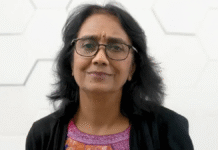BY SAARANI VENGADESEN
Around 60% of global methane emissions are caused by human activity and comes largely from agriculture, energy and waste. Many global efforts have been initiated in recent times to slash the second most powerful climate pollutant – methane.
The Global Methane Pledge (GMP), Global Methane Initiative (GMI), Oil and Gas Methane Partnership (OGMP) 2.0 are some initiatives that are under the spotlight.
Malaysia is one of the signatories of GMP and it signifies the nation’s firm commitment in reducing methane emissions.
To accelerate methane mitigation efforts, the US-based Environmental Defense Fund (EDF) has formed a collective action with climate scientists from public and private universities in Malaysia.
EDF rolled out an extensive study to target the blind spots in quantifying methane emissions and to determine suitable approaches to measure methane emissions from the oil and gas (O&G) industries in Malaysia.
Recently, The Petri Dish spoke to the local technical experts who are dedicating their efforts in this extensive study. Their expertise lies on atmospheric research, mathematical modelling, data measurement and policy studies.
Data transparency in measuring methane

“Looking into Malaysia’s methane emissions data, there are multiple platforms that provide information. However, it is still quite uncertain when different data sets are compared,”said Dr Mathew Ashfold, associate professor at the University of Nottingham Malaysia.
For instance, considering Malaysia’s O&G sector, the latest government data attributes 57% of emissions to venting from oil production and reports no emissions from venting from gas production, whereas International Energy Agency (IEA) data indicates that both venting from oil and gas production contributed 27% each.
He noted that differences between the data sets arise from different methodologies and assumptions made in constructing the data sets.
“Our findings so far show that more scientific studies based on measurements of methane in the atmosphere need to be carried out and more attention is required in improving the quantification of methane emissions,” said Ashfold.
Ashfold suggested Measurement, Reporting, and Verification (MRV) is an important tool to improve confidence in emissions data. MRV is a set of practices that have multi-step process to measure the amount of greenhouse gases (GHG) emissions, then report the emissions to an appropriate independent third party to enable verification of the data.
“We need better data for stronger action. Poor understanding of true levels of methane emissions and the underlying distribution of sources are among the factors that can hamper methane mitigation,” he added.

Elaborating on big scale measurement; “MET Malaysia has established a GAW Global Station in Danum Valley. A set of observations is currently ongoing at the GAW stations. These stations are located in Petaling Jaya, Tanah Rata and Danum Valley. However, it is still limited for methane measurements,” pointed out Dr Mohd Shahrul Mohd Nadzir, from Universiti Kebangsaan Malaysia (UKM).
Robust emission inventory

“Atmospheric monitoring of methane concentrations and the determinations of country-specific emissions factors are required to detect regional trends in emissions,” said Dr Yusri Yusop, an atmospheric scientist from Universiti Sains Malaysia (USM).
Yusri said in the case of offshore oil rig operations, there is a pressing need to identify a suitable measurement method and the optimisation of it.
“While satellites offer global-scale coverage, Malaysia has its own set of limitations in measuring methane as a country in the tropical region. Malaysia has high cloud cover and water vapour,” he explained.
Shahrul said that he focuses more on cost-effective technologies such as cost efficient sensors.
“Both Yusri and I work more on energy-efficient instrumentations compared to ones used in the stations as they consume a lot of power. We are currently working on developing a cost effective sensor tool that can be brought remotely and can be attached to drones. In recent times, we saw many presentations emphasising on using drones to fly over oil and gas plantations, onshore oil rigs to capture methane emissions,” said Shahrul.
“We use the Internet of Things (IoT) platform to connect our sensors to the Internet, to receive the data, to store the data in the cloud, and then process the data, and then visualise it on the dashboard or mobile app for any user, he added.
Yusri added that, currently for this study, they are doing a gap analysis on emission factor and activity data, both critical to an emission inventory, studying the available methane emissions data.
“We are using methodologies suggested in Intergovernmental Panel on Climate Change (IPCC) guidelines. We apply the default Tier 1 method to identify main sources and gaps , while searching for Malaysia specific Tier 2 values that can fill those gaps,” he said.

Speaking on computation of data, Associate Professor Ir Dr Viknesh Andiappan and his team at Swinburne University are currently developing a Marginal Abatement Cost (MAC) model for methane emissions data in oil and gas sector, Malaysia. The MAC curve is a popular policy tool that helps in identifying GHG emissions and its cost.
“Assessing MAC of methane emissions improves the understanding of the extent of current methane emissions and provides policy makers with information on how to mitigate methane emissions cost-effectively,” said Viknesh.
“We are expecting to complete this model by next year,” added Viknesh.
Curtailing methane from a policy perspective

“A major stumbling block that is limiting better design of methane policies is lack of robust methane data. Even globally, better quantification of methane emissions is urgently needed. This is understandable, as methane abatement is a very new area of focus and there are many things that need to be figured out as the GMP was only signed in 2021” said Dr Helena Varkey, associate professor of environmental politics and governance, Universiti Malaya.
She added that the country’s biggest opportunity for tackling methane emissions lies in the oil and gas and palm oil industries. As global leaders in these sectors, Malaysia has the potential to be a champion in methane management. However, accurate and transparent reporting are key. Companies like Petronas and Shell also have already put in place their own methane MRV and mitigation efforts, but there still seems to be gap in governance frameworks to verify these efforts and include them into national emissions accounting.
“In our study, from a policy perspective, we are looking at what extent the GMP is shifting the landscape of methane emissions in Malaysia. To be more precise, we are trying to understand the current situation, opportunities, and challenges of methane data coordination and governance here. How can government policy and industry measures work together to abate methane?”
“We are also keen to understand the pros and cons of having more targeted policies for specific greenhouse gases instead of the traditional focus on carbon dioxide. Our goal is to ultimately provide some concrete policy recommendations for the Malaysian government and industry to move in a clear and climate-positive direction,” said Helena.
















